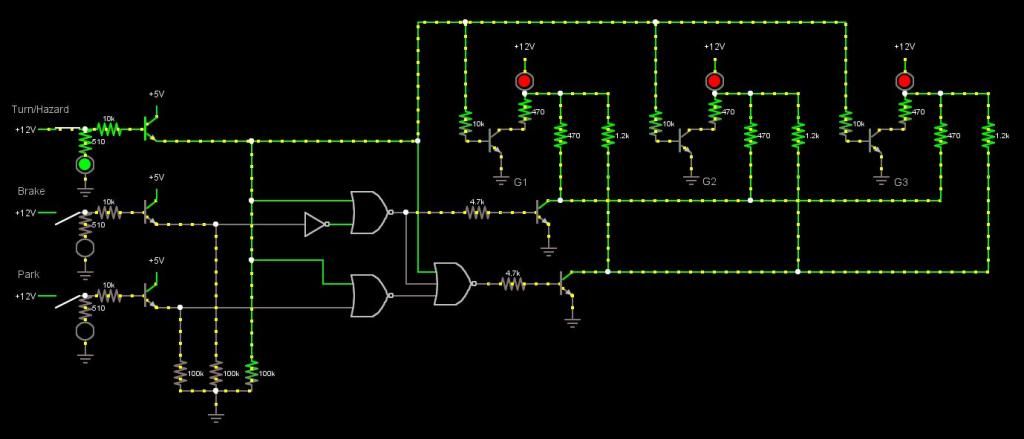I am leaving the factory wiring in the truck for two reasons.
One: In case he puts the bed of the truck back on, he can simply just plug his factory lights back in.
Two: Messing with the factory wiring harness could mess up the front lights, as well as the hitch lights for towing.
I am only tapping into the factory harness to get the 12 volts from the switches themselves.
I use a Snap-On 12v test light. It plugs into the cigarette lighter of the truck. It has two built in LED's, one is red, other is green. When it senses ground, it changes to green only, power it changes to red. Pretty simple.
The wire from the brake switch is putting out 12 volts, ± 1 volt. When it is off, there is no signal, it does not alternate back to ground. (my test light shows both red/green LED's on inside it, indicating as if the wire was never hooked up to ANYTHING.)
The wire from the Park Lamp is putting out 12 volts, ± 1 volt. When it is off, the test light changes to green, indicating it is to ground.
The wire from each turn signal is putting out 12 volts, ± 1 volt, however, it alternates from voltage to ground. I don't know the frequency of the pulse, but from what I've been reading, it is about 1.5 hz (90 flashes per minute). I do not have a scope to test that. When the switch is off, the test light shows the wire then goes to ground. When the hazards are turned on, both the left and right turn signal alternate from power to ground, however, it is at a slower frequency, maybe at 60 or 70 Hz.
Rs20, this is what I am after:

The table above is per side, left or right. For instance, when the turn signal is on the left, and brake is applied, the right side will have the brake light, but the left side will be flashing.
The way I want the LED's to work when the turn signal/hazard is activated is like this:

I played around with this last night:

G1, G2, and G3 would be connected to the Anodes of the BT169's in the original circuit.
I would still need to figure out how to change the pulse into a steady for the Turn/Hazard.
This circuit would use one Inverter, two NOR gates, and one 3-input Nor Gate.
I would still need the 4017 and 555 and the BT169's to do the sequencing.
The 470 resistors would not be needed and the 1.2k need to be reduced, as the LED assemblies have them built in. I just needed those values for the simulation using single LED's for the visual. So please disregard those.
Jason